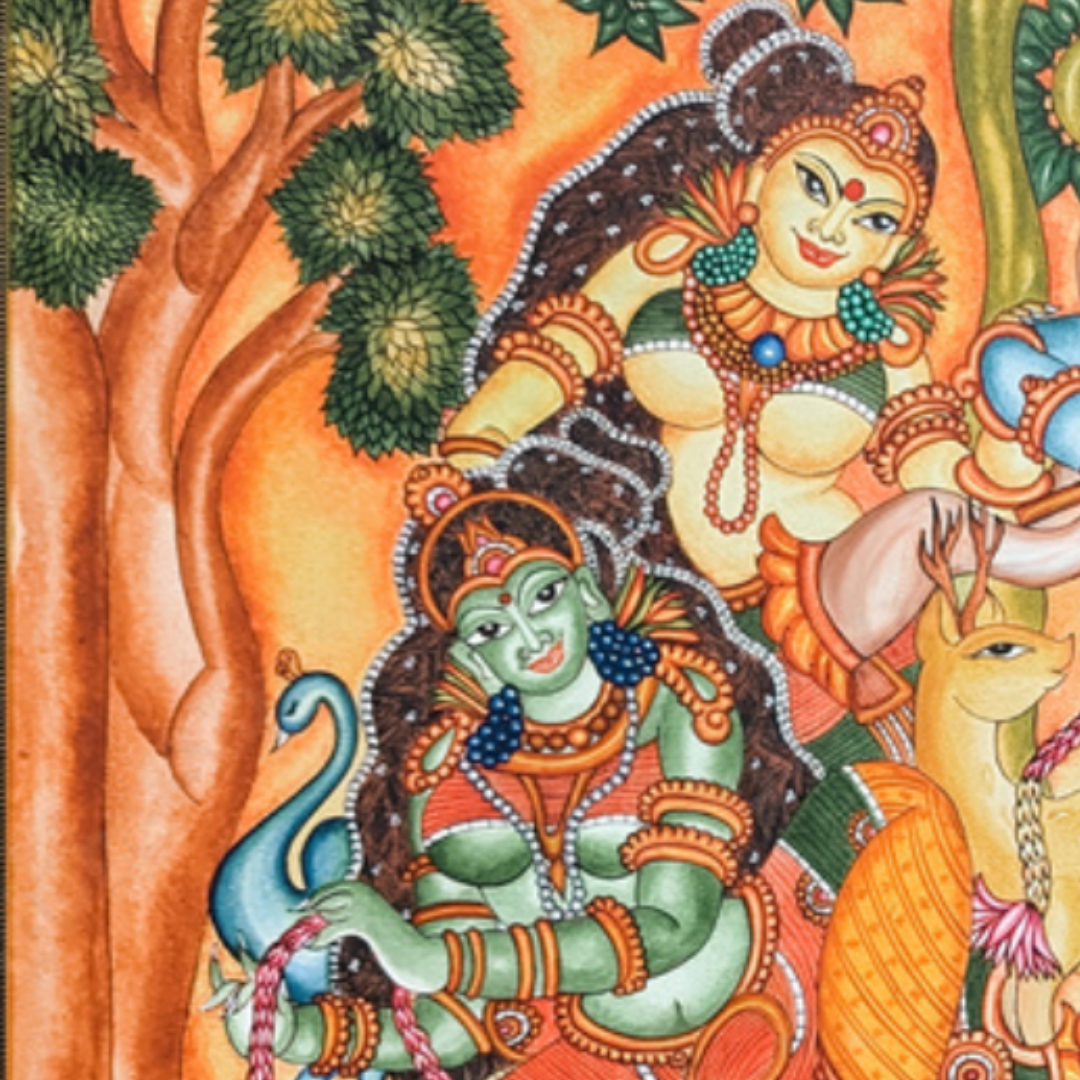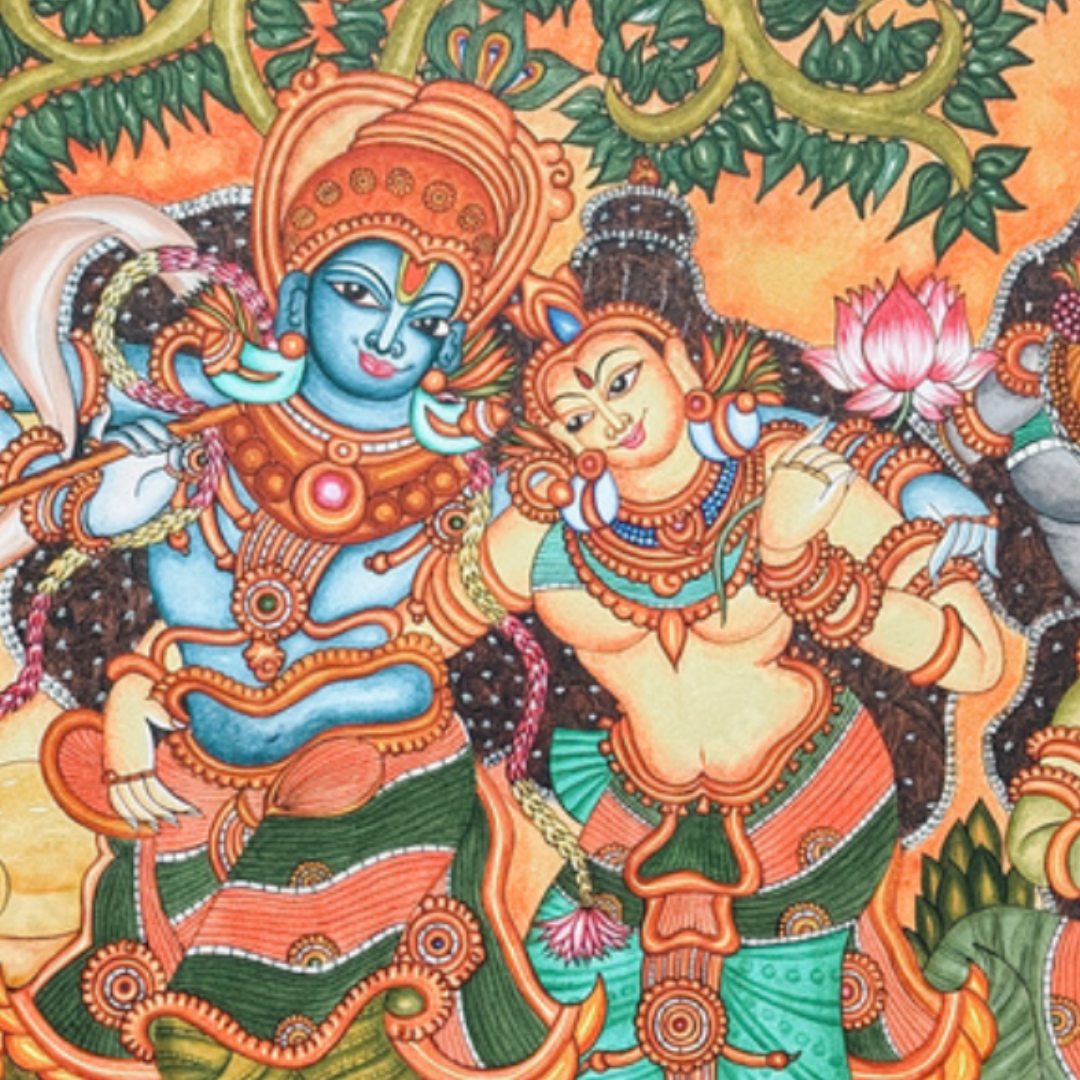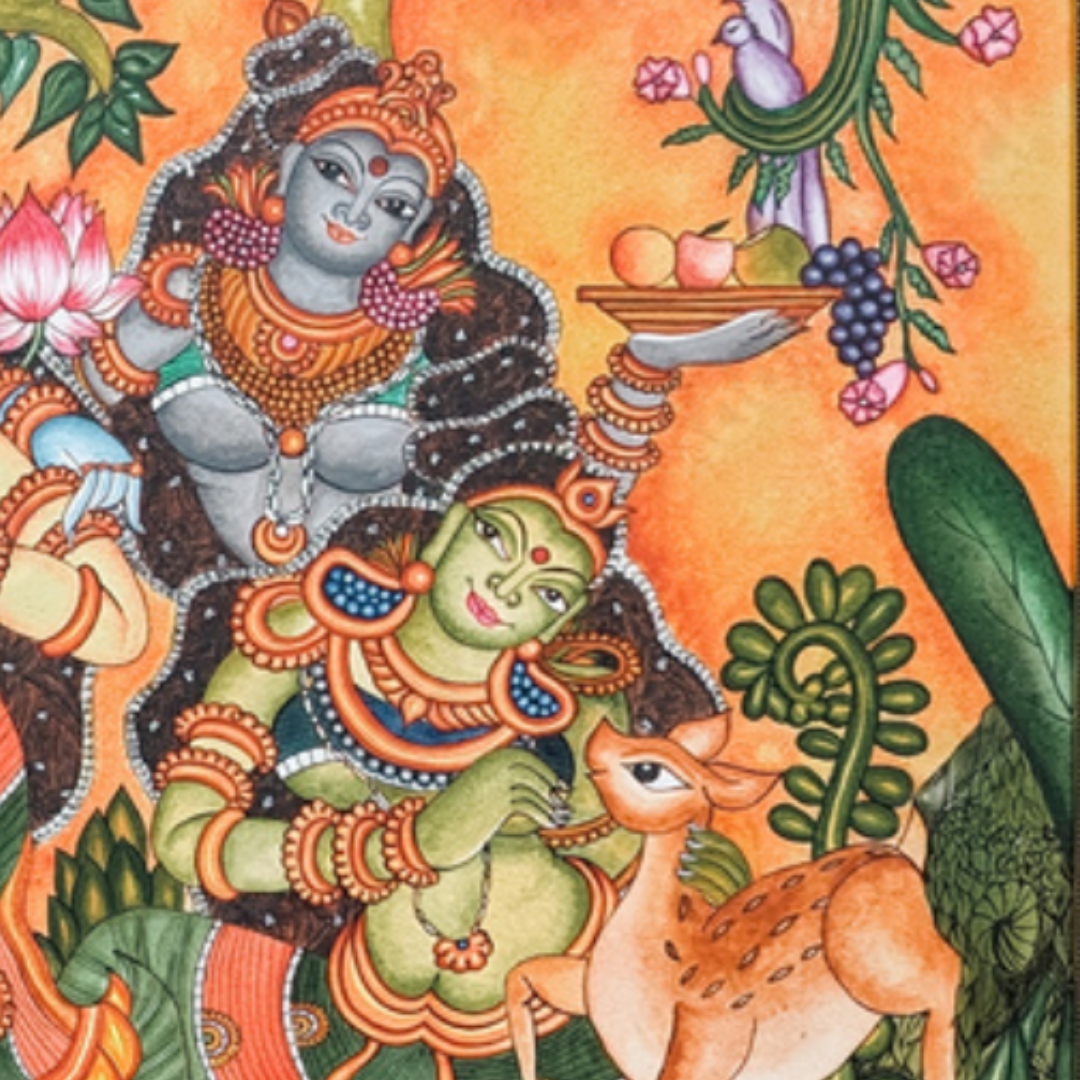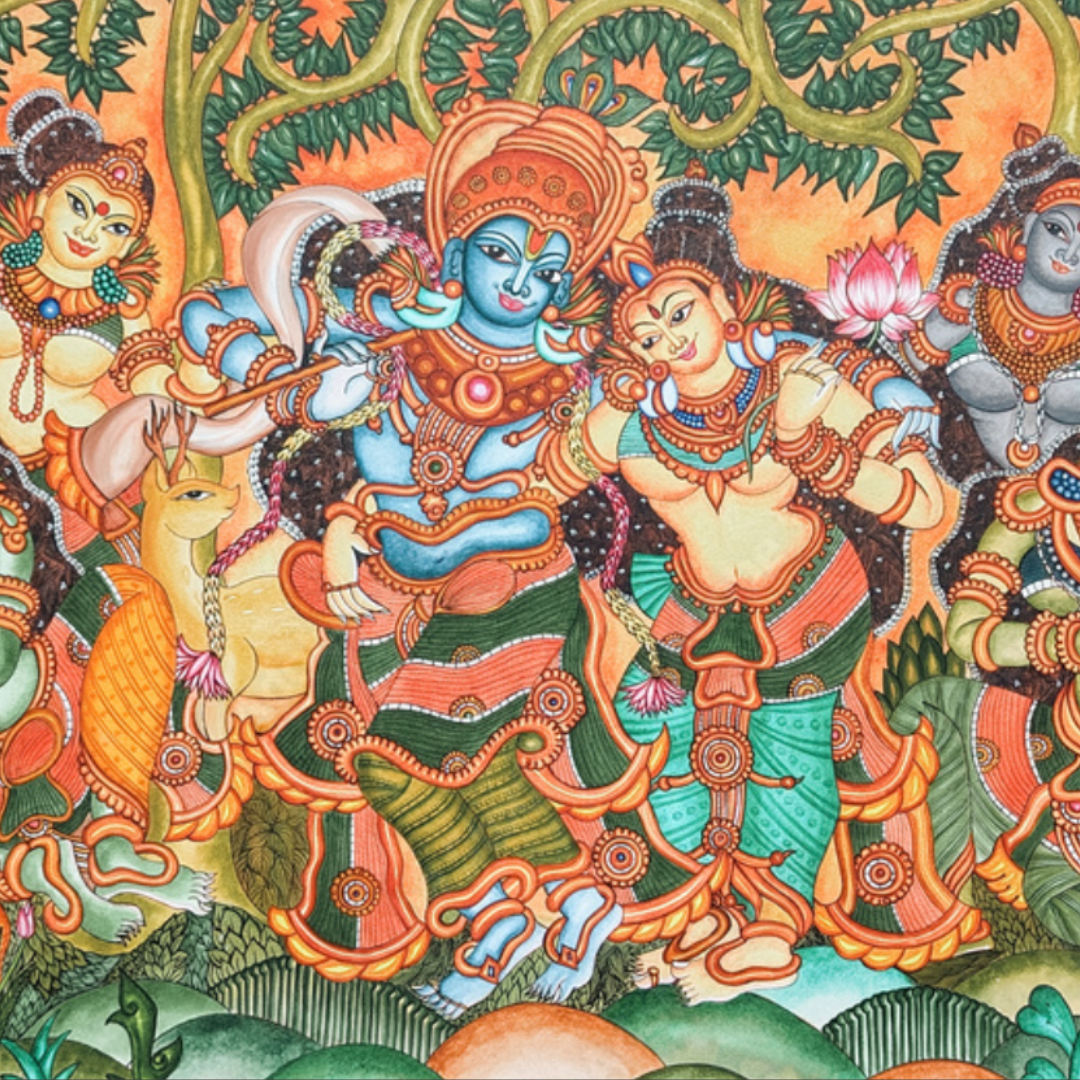
Map Loading...
Kerala Mural Painting
Kerela
Step into a temple in Kerala, and the walls tell more than sacred stories, they are the storytellers themselves, alive with color and detail unique to this tradition. Kerala mural painting, a traditional Indian craft from the state of Kerala, transforms temple, palace, and church walls into rich visual records. This art focuses on Hindu mythology and local legends, with scenes rendered in bold colors and intricate patterns.
Kerala’s mural tradition stretches back over a millennium, with the earliest known examples in cave temples and sacred sites like Thirunandhikkara, now in Tamil Nadu. The art flourished under the Chera and later Travancore and Zamorin dynasties.
The process of Kerala mural painting remains labor-intensive and precise. Artisans start by perfectly preparing the wall with several layers of lime and sand plaster, finished with repeated washes of lime and tender coconut water for a gleaming surface. Brushes traditionally use blades of elephant grass and muskrat hair. Color palettes, referred to as panchavarana or five colors, are sourced from natural minerals and plants: red and yellow from laterite stones, green from indigo and Garcinia morella, white from lime, and black from lamp soot. Brushes, coconut water, and neem are essential for blending and application. Painting unfolds in a sequence: sketching with hand-made pencils, outlining, blocking colors, shading, and defining details.
Kerala mural paintings stand apart for their natural pigments and iconic narrative style. The mythological figures—green for divine, red for royal, black or white for demonic—are instantly recognizable. Accurate iconography aligned with ancient scriptures, use of durable natural binders, and strict adherence to tradition have earned Kerala murals a premium position in heritage and tourism markets.
Material
Technique
Showcase



